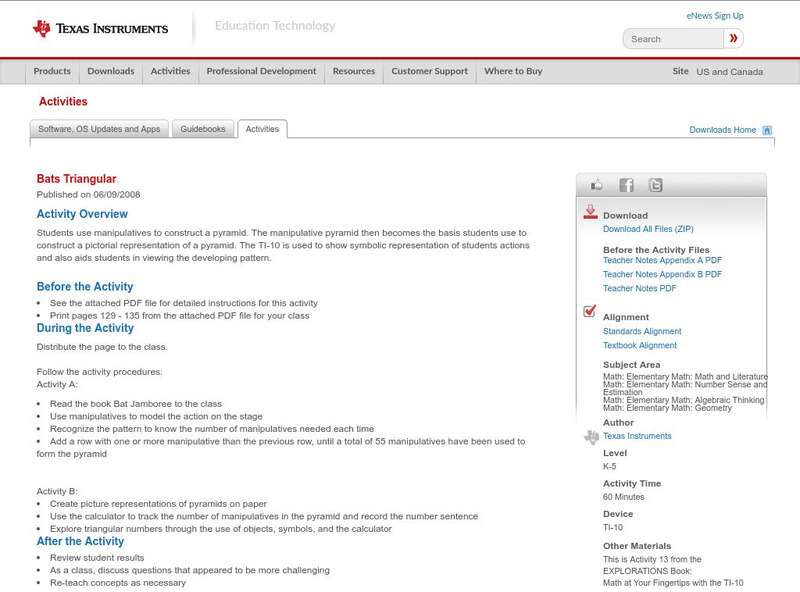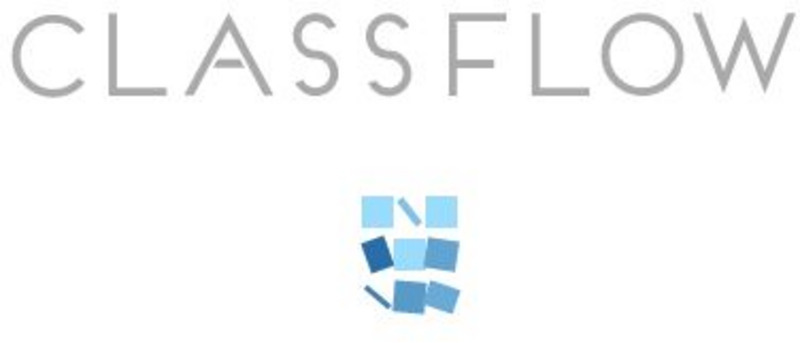Hi, what do you want to do?
Curated OER
Making Number Stories
In this making number stories learning exercise, students use addition sentences to create word problems. In this short answer learning exercise, students write two word problems.
Curated OER
Bouncing Balls
Students work together to examine how different types of balls react to colliding with different surfaces. They discover the difference between elastic and inelastic collisions. They practice calculating momentum as well.
Curated OER
Connect the Dots
In this connect the dots worksheet, students use their counting skills to connect the 36 dots in order to reveal a mystery picture.
Curated OER
Pronunciation Practice: /th/ sound
In this th sound worksheet, students read words, read sentences, categorize words, write words they hear, and more. Students complete 4 activities.
Curated OER
Riding the Gravity Wave
Students write a sketch of an artist or athlete that has pushed the limits on gravity. They explore concepts of rhythm, balance and friction. They examine how engineers design sports equipment.
Curated OER
Formula Challenge
In this science worksheet, students name what each of the units listed represent whether it is distance, time, speed, or acceleration. Then they solve each of the word problems that follow, showing all of their work.
Curated OER
Movie Magic Square
In this magic square worksheet, students solve equations to determine the numbers to be placed in grids. This one-page worksheet contains 25 problems.
Curated OER
Agriculture Counts
Students discuss ways in which agriculture impacts their lives on a daily basis. In groups, they brainstorm ideas that they could possibly write about. They write a rough draft, participate in peer editing and write a final draft of a...
Curated OER
Halloween Scene
In this math activity, students solve 4 story problems which pertain to Halloween. Students estimate, calculate prices, and convert liquid measures to solve these problems.
Curated OER
"Gazunheit!"
Learners study the /a/ phoneme by determining how the mouth move when it makes the sound by imitating a sneeze. They recite a tongue twister, practice writing the lowercase "a" and listen to a story while identifying the letter sound....
Curated OER
Mathematical Baseball
Second graders, divided into two teams, with the "pitch" being an addition or subtraction problem. If the "batter" answers correctly before the "catcher," the student runs to first base. f the catcher answers first, the batter is out.
Curated OER
Problems at the Ballpark
Seventh graders reinforce understanding of logical thinking in problem solving.
K5 Learning
Force
Follow-up a physical science lesson with a reading passage that connects sports to force. Readers respond to six short answer questions that requires them to use the text as a basis for the answers.
Science Buddies
Science Buddies: Baseball Bat Debate: What's Better, Wood or Aluminum?
Science and math abound in baseball. In this project, you can produce some interesting baseball statistics of your own and perhaps settle a long-standing debate. You'll set up experiments at your local playing field to find out which...
Kids' Wings
Little Red Schoolhouse: "Honus and Me"
Here you will find a wide variety of enrichment activities, information and games to enhance the book "Honus and Me."
Better Lesson
Better Lesson: What Angles Are on a Bat House?
Third graders are preparing to build bat houses. They have calculated surface area, identified nail placement, and will now collect data on angle types in this real-world activity.
Better Lesson
Better Lesson: What Makes a Shape? Analyzing and Script Writing
Third graders will use the bat houses we built as examples of various quadrilaterals.
Texas Instruments
Texas Instruments: Bats Triangular
In this activity, students use manipulatives to construct a pyramid. The manipulative pyramid then becomes the basis students use to construct a pictorial representation of a pyramid. The TI-10 is used to show symbolic representation of...
ClassFlow
Class Flow: Birds
[Free Registration/Login Required] This flipchart is an integrated lesson on birds for science and math.
PBS
Pbs Kids: Cyberchase: Echo Explorers
Players explore math concepts and must use echolocation, as well as their skills in mapping and coordinates, to help free the bats trapped in dark caves.
PBS
Pbs: Scale City: Similar Figures in the Real World
This video features the Louisville Slugger Museum and Factory, home to the world's largest bat. Students see the role that measurement and engineering play in making bats to professional players' specifications and are asked to consider...























